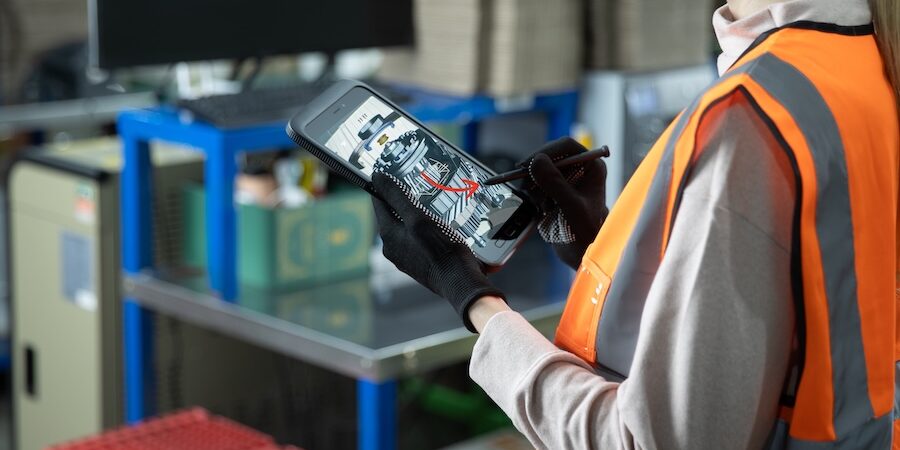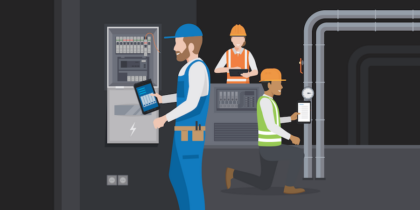Time is money, and that adage holds especially true in manufacturing, where downtime is often a factory’s most costly line item. That’s why more manufacturers are turning to predictive technologies that use real-time data to anticipate problems and optimize performance before downtime sets in.
When equipment stops, so does revenue
Fortune 500 companies lose an estimated $1.4 trillion each year to unplanned downtime, roughly 11% of their total revenue. In the automotive industry alone, a single hour of halted production can cost up to $2.3 million, or $600 every single second.
Why does downtime impact revenue so dramatically? As soon as the “assembly line” stops, financial losses start, as issues like missed production targets, underutilized crews and delayed orders ripple outward. In addition to eroding margins, downtime also erodes trust, and many of these disruptions come from issues that could be anticipated or even prevented.
The problem stems from how most maintenance is still managed. Rigid service intervals and reactive repairs result in a process that’s inefficient and ill-timed.
The power of real-time insights
Predictive maintenance has the potential to transform this process, because it’s more than just an alert system. By embedding industrial-grade IoT sensors directly into machines, manufacturers can capture granular, real-time data on conditions like vibration, temperature, pressure and more. These signals can be analyzed through AI-powered platforms to forecast failures before they happen, enabling maintenance teams to act at the right moment.
Digital twins — virtual replicas of physical assets — take this a step further. Continuously updated with real-world sensor data, digital twins enable engineers to simulate different operating conditions, test fixes before deployment and identify inefficiencies that would otherwise go unnoticed. Over time, digital twins build a rich historical record of machine behavior, improving predictive accuracy and driving smarter maintenance cycles.
But capturing data is only half the equation; getting it into the right hands is just as important. That’s where connected wearables come in. Devices like smartwatches serve as always-on interfaces, giving technicians and supervisors access to real-time alerts, diagnostics and performance trends without needing to leave the floor.
Closing the loop on downtime
To understand how these technologies work in tandem, look no further than global automotive supplier, Magna. With 328 manufacturing divisions across four continents, Magna wanted to modernize how it tracks and responds to issues on the factory floor. At one of its high-volume facilities—home to 40 assembly lines producing more than 21 million door safety latches a year—teams relied on radios to flag problems as they happened. The process worked, but it was slow.
By integrating Samsung’s enterprise technologies — including rugged tablets, smartwatches and large-format displays — Magna created a closed-loop alert system. Now, when a line goes down, team leads can instantly send a notification from their tablet to a technician’s smartwatch. That alert can be acknowledged on the spot, cutting down response times and resolving issues faster.
The system also delivers brand-new analytics, from mean time to repair (MTTR) to overall response metrics. With these insights, the company shifted from reactive troubleshooting to proactive improvement, laying the foundation for smarter, more connected operations across its global footprint.
Putting insights into action
Predictive maintenance isn’t just about fixing problems before they happen. It’s about making industrial operations more intelligent. In an environment where every minute of downtime chips away at margin, predictive technologies offer a path to higher reliability and long-term profitability.
With the right mix of sensors, connectivity and digital modeling, manufacturers can extend the life of their machinery while reducing the frequency and severity of disruptions. In fact, predictive maintenance and condition-based monitoring has been shown to reduce unplanned machine downtime by up to 50%, increase maintenance productivity by 55% and reduce maintenance costs by 40%. As IoT and AI capabilities continue to mature, the next generation of factory floors won’t just be connected. They’ll be continuously improving.
Learn more about Samsung enterprise solutions here.







